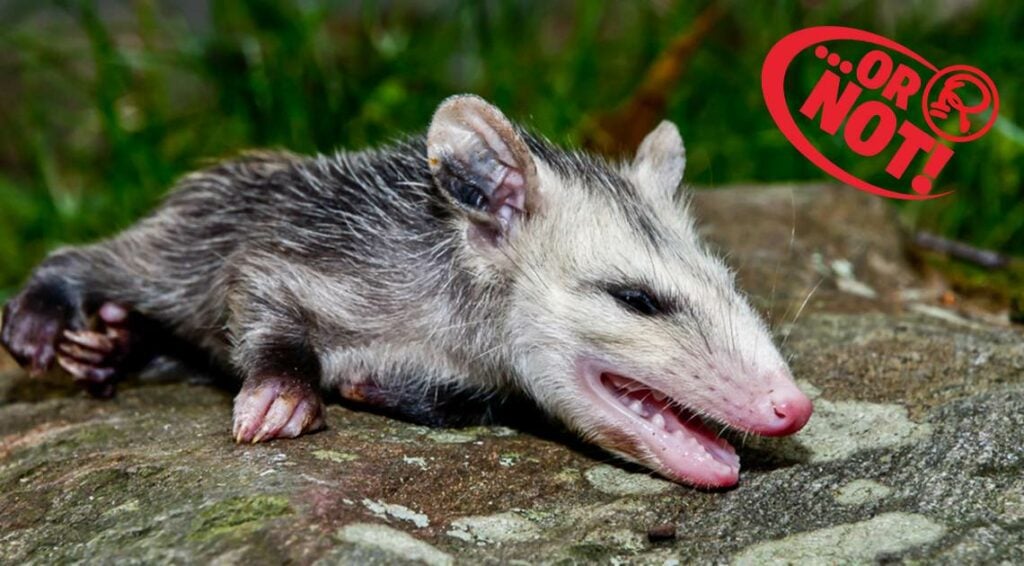Possums are tree-living marsupials that are commonly found in Australia, Indonesia, New Guinea and Sulawesi. While they are commonly mistaken to be oppossums, they are actually of different species. But did you know when possums play dead they actually passout and are not playing?
Possums do not play dead but rather pass out from fear of predators. When confronted, they go into shock and pass out involuntarily. Until they regain consciousness, they are in a catatonic state.
Possums Playing Dead: A Defense Mechanism
When the possum plays dead, it has been caught off guard or can sense a predator nearby. It descends on the ground and either closes its eyes or stares out into space if it feels threatened by a dog, fox, owl, or any other animal that may consider them as prey.
Its body turns slack; its respiration appears to cease. It passes gas, empties its intestines, sticks out its tongue, and drools. The possum will not respond even if you poke it. Appearing desceased to whoever is around it.
This defense technique is designed to mislead the possum’s attacker and allow it to flee. Many people think it’s a beautiful deed, but scientists say the possum is in tonic immobility or thanatosis, and its body goes into a catatonic mode in response to fear. Playing possum is an involuntary response to a threat, not an act.
When this happens, the animal feels no discomfort and has no reflexes. It has even stopped flashing. Even if a predator swats, bites, or breaks the possum’s bones, the possum will not respond.
Dead prey repels many wild animals, an evolutionary strategy protecting carnivores from eating infected food. The majority of predators will abandon the target that plays possum.
It can take a few minutes to several hours for the marsupial to regain mobility. They can survive these kinds of confrontations but can also be hurt. Many possums have been discovered with healed wounds and fractures, most likely from being assaulted.
In addition to seemingly feigning death, possums have other remarkable traits. They have prehensile tails to climb tree branches, and they’re immune to pit viper venom. Females give birth to up to 18 babies at once just 12 to 14 days after conception.
They’re also very adaptable. The Virginia possum, for example, has expanded its territory to the north, which has a much colder climate. In some northern states, the animals survive frostbite on their tails and ears when they appear in the spring. They’re battered but resilient. And here’s a fun fact: opossum means white dog in the Native American Algonquian language. (Source: Ripley’s)
What are the Different Kinds of Possums?
Brushtail possums are Australia’s most common marsupial and arguably the most popular one as well. Brushtails have long, thick tails with a prehensile tip and a furless area on the underside that lets them hang onto tree branches, as its name suggests.
Unlike many other possum species, these nocturnal, solitary critters have evolved to live close to humans, especially in urban places like Sydney. They, like koalas, have developed the ability to eat plants that are poisonous to other species. Possums eat insects, tiny invertebrates, and eggs, among other things.
Ringtails are another possum species that live in communal nests known as dreys. Dreys, which live in tree branches and hollows, usually have an adult female and male, as well as two pairs of twins, one still nursing and the other slightly older but still reliant on the adults. (Source: National Geographic)
